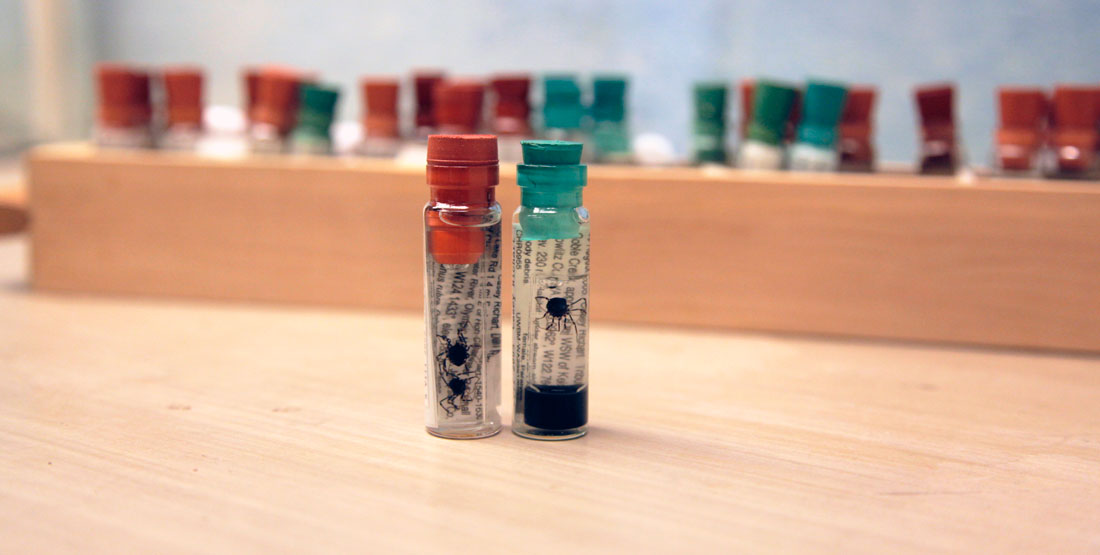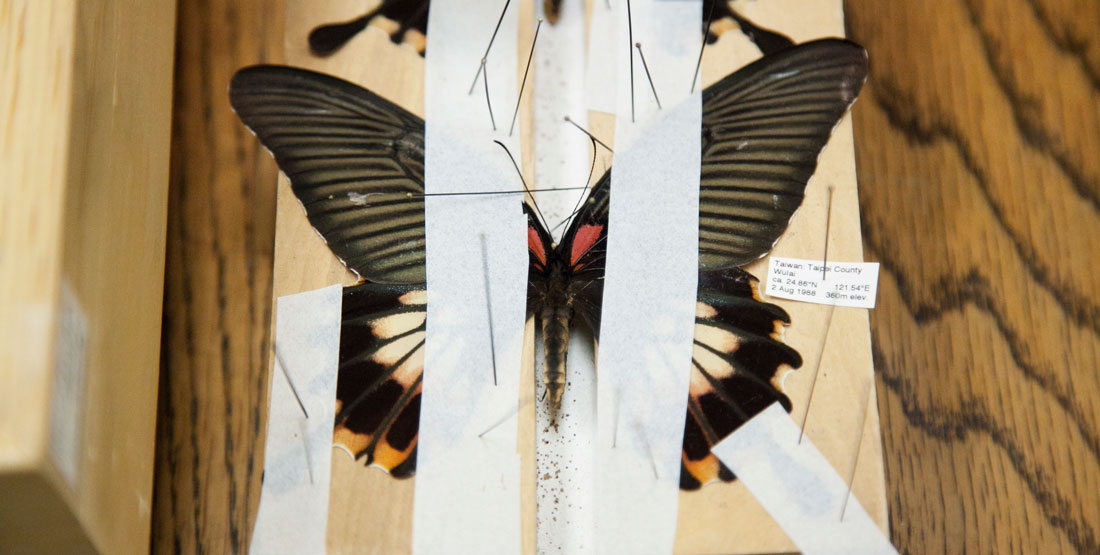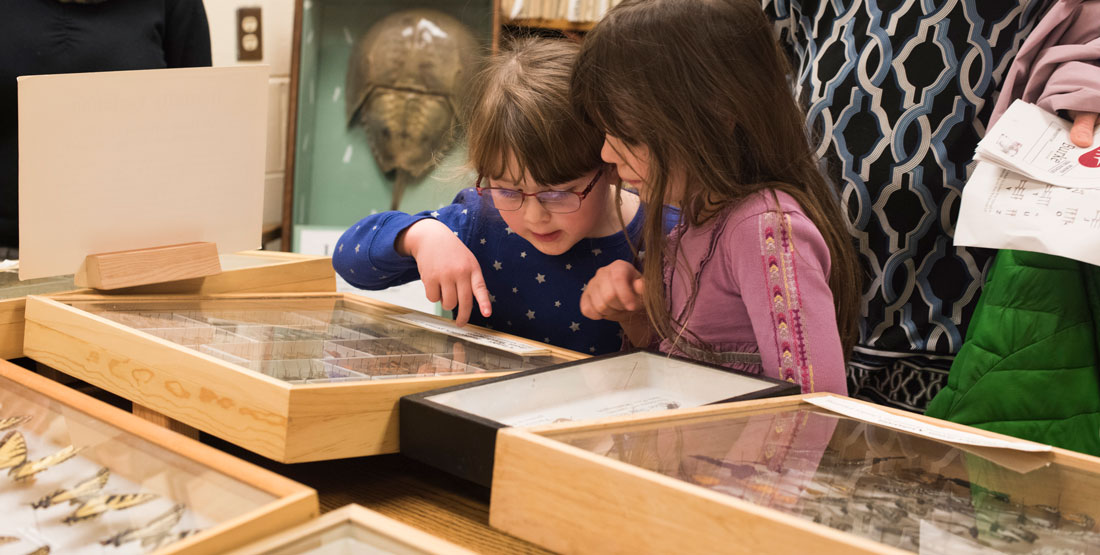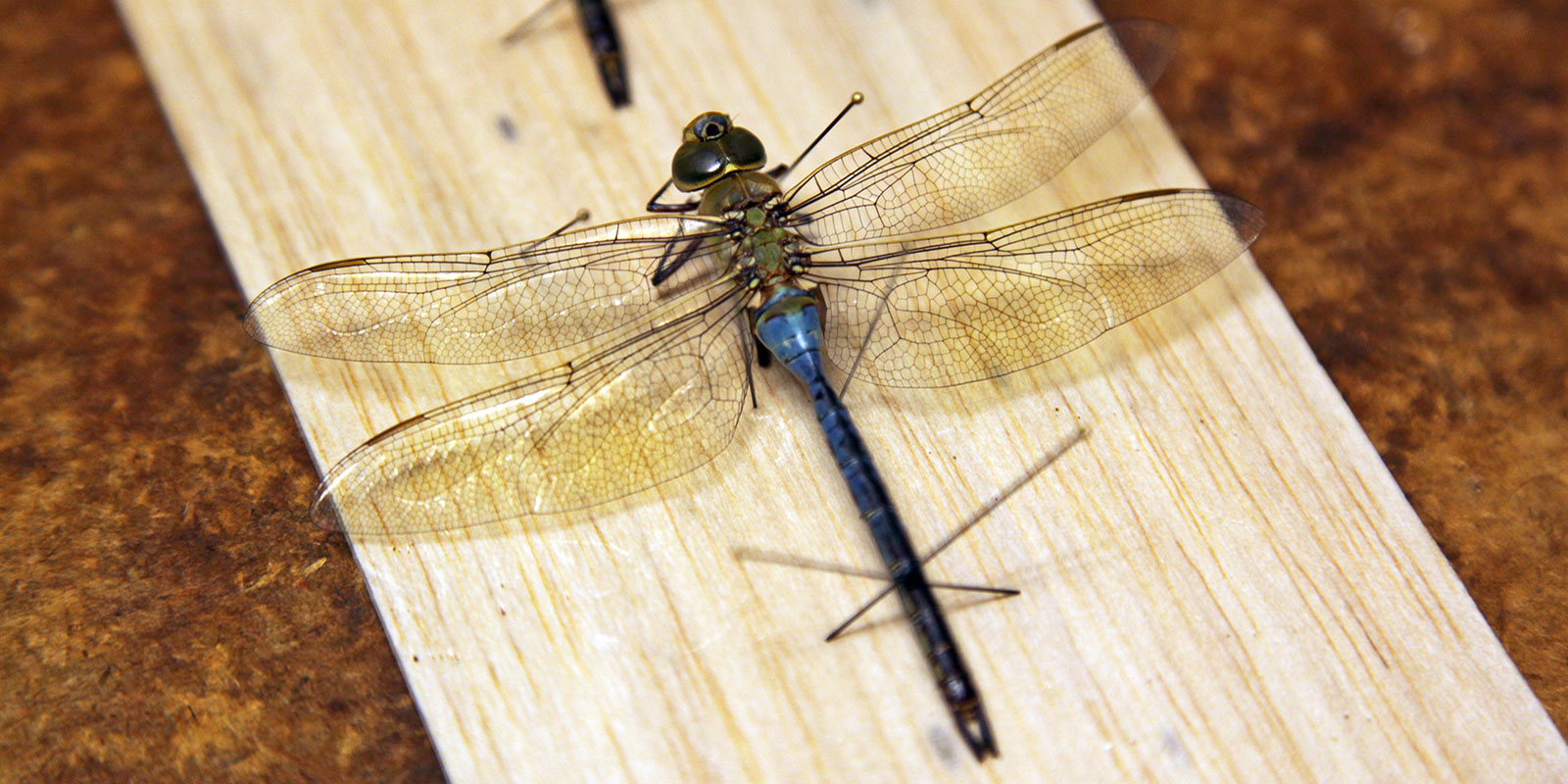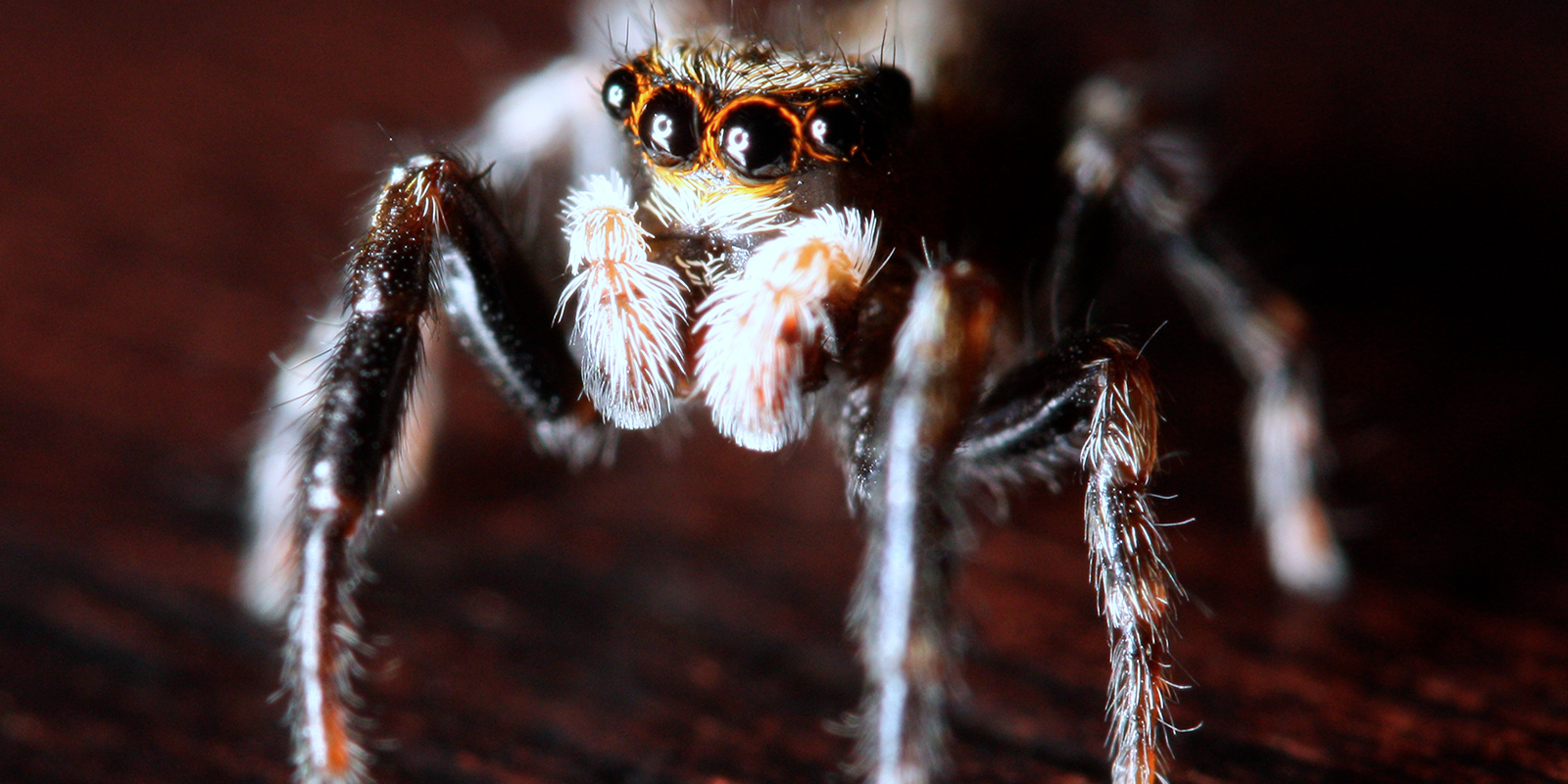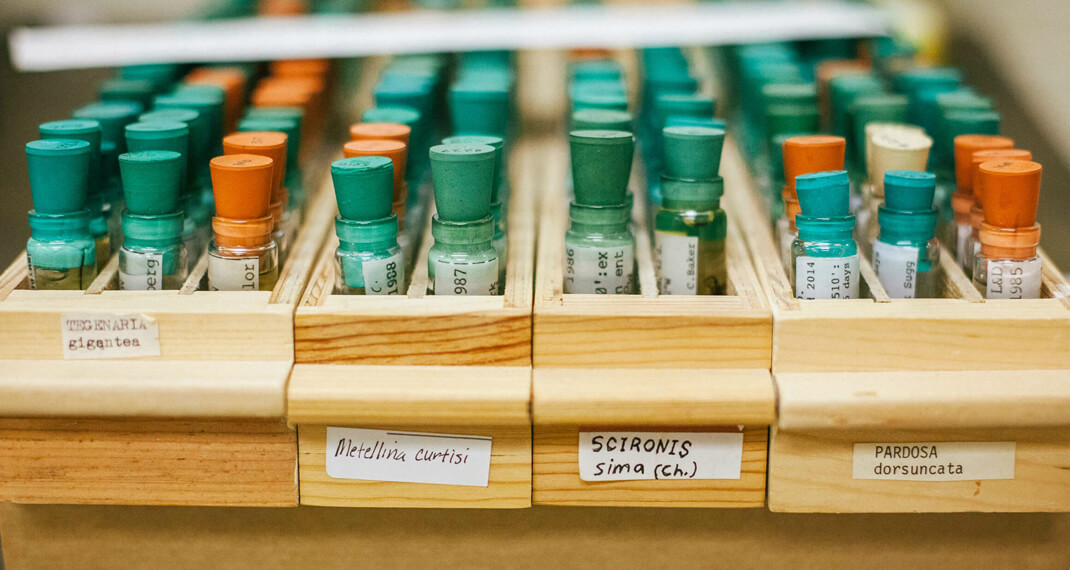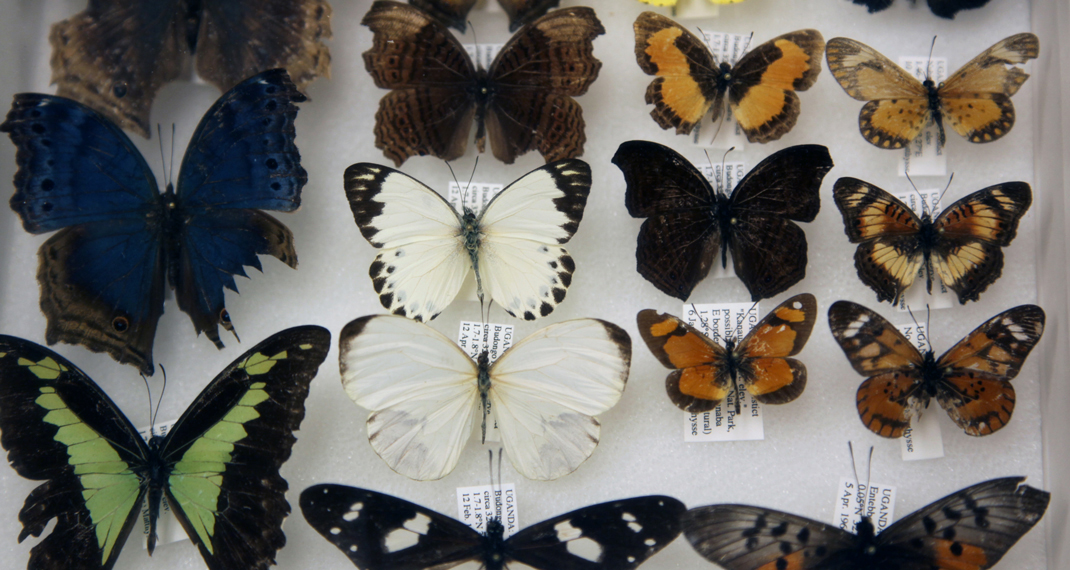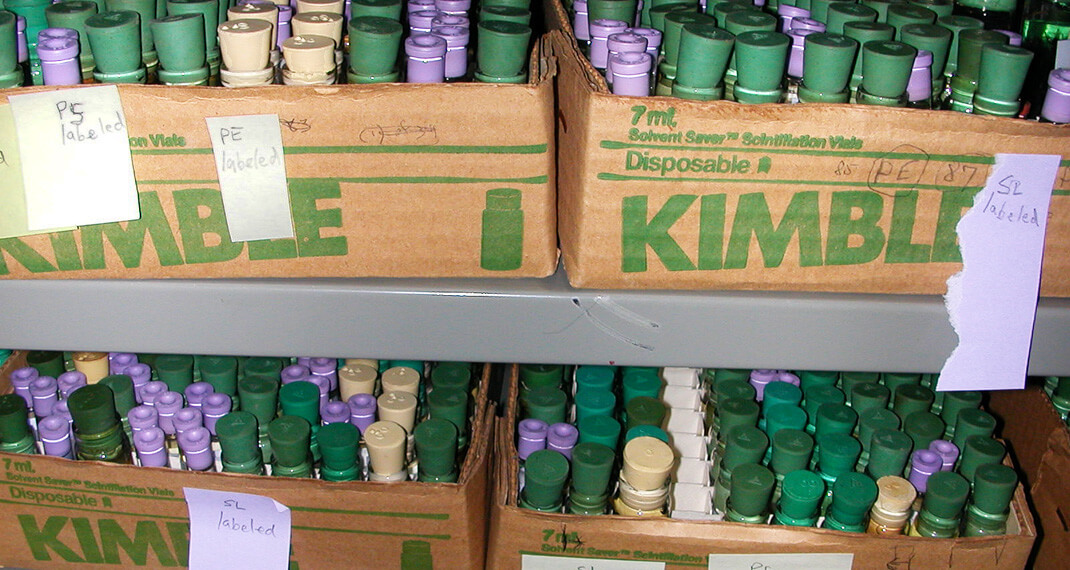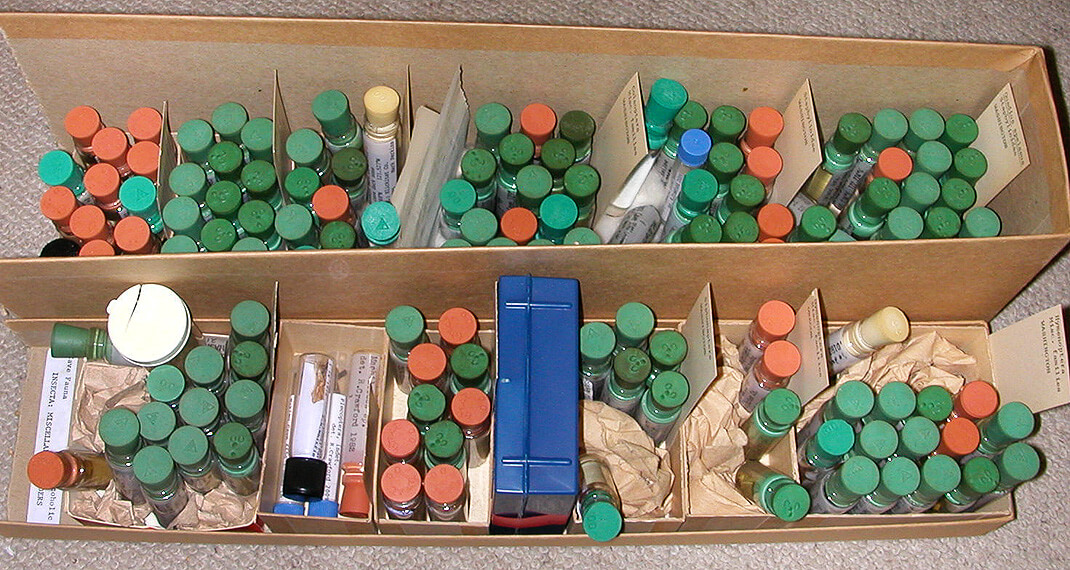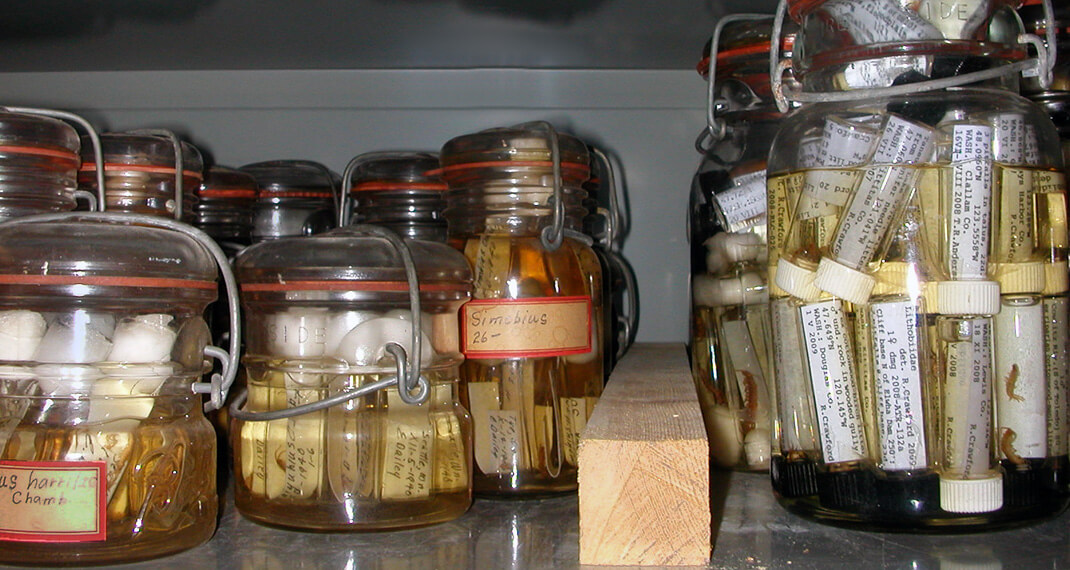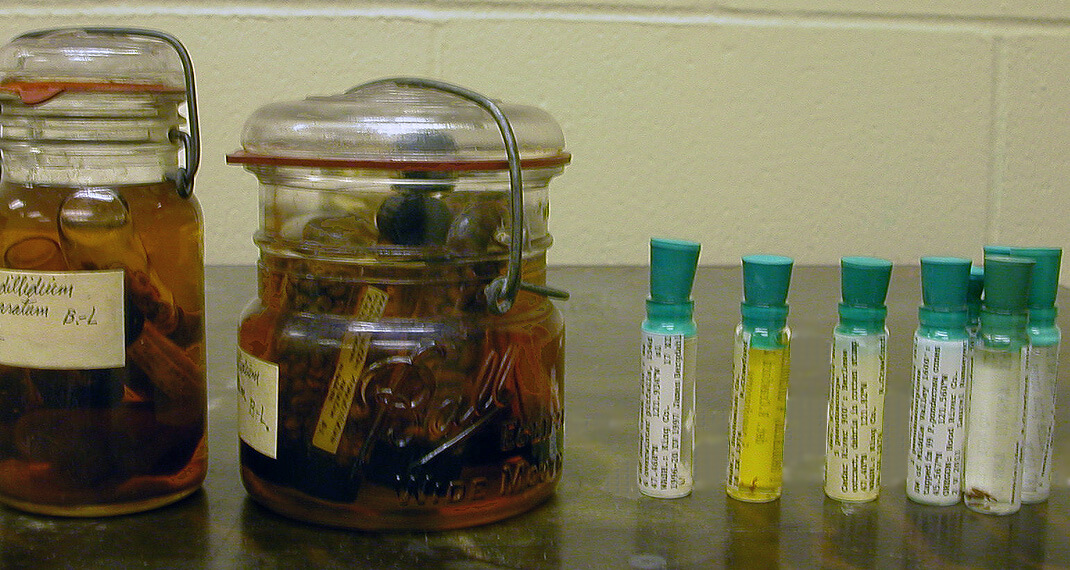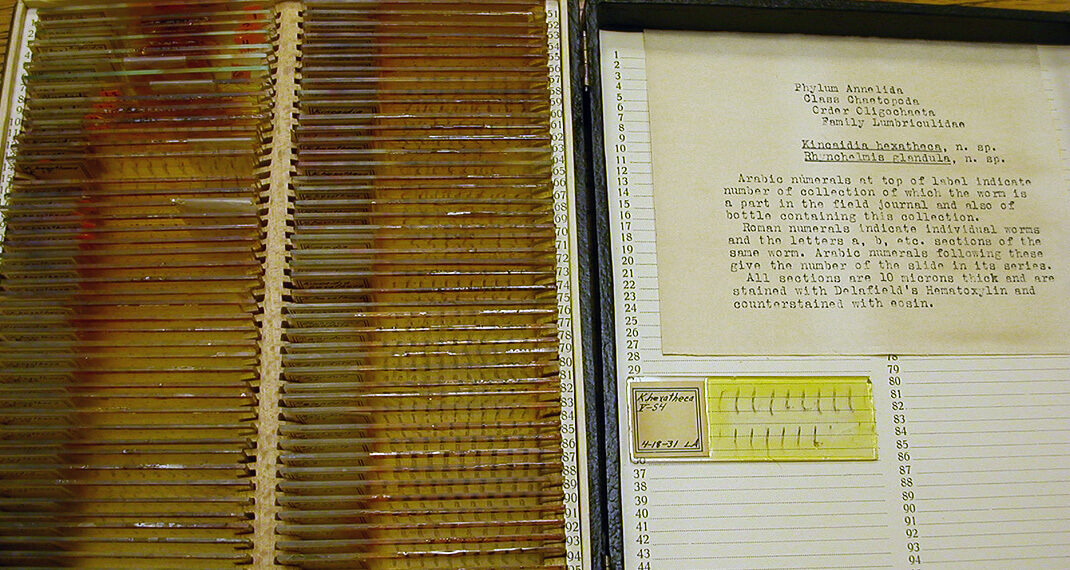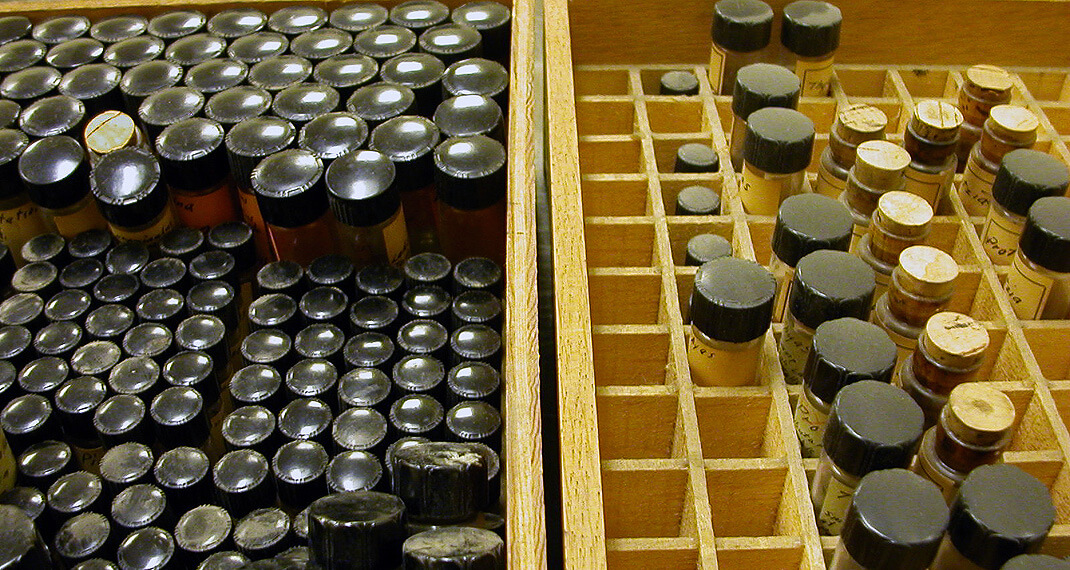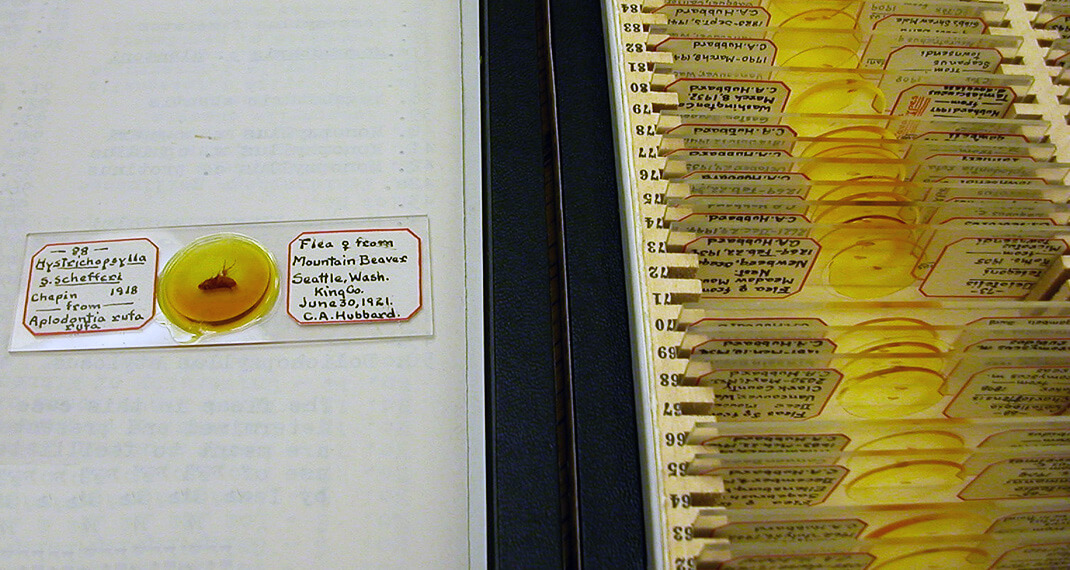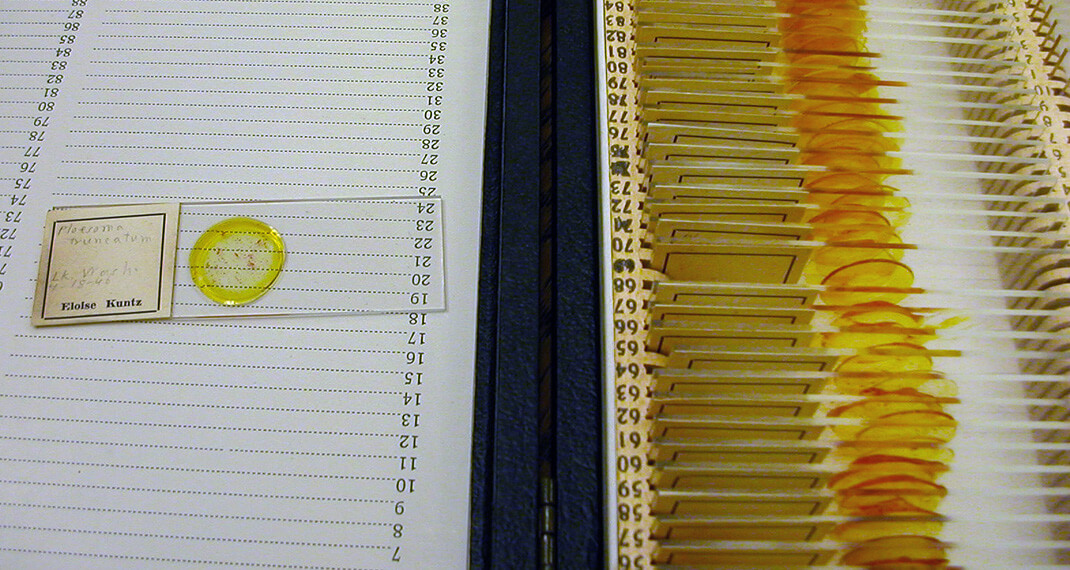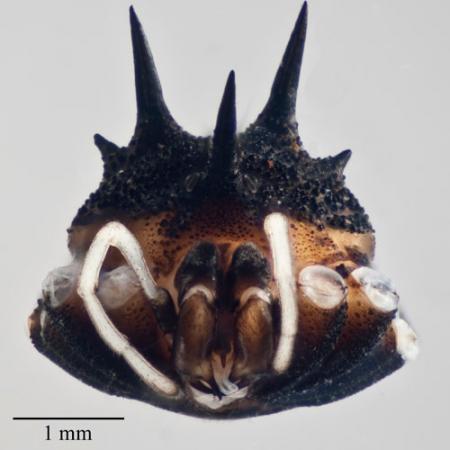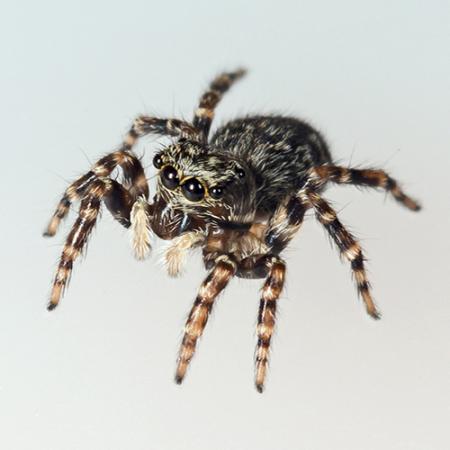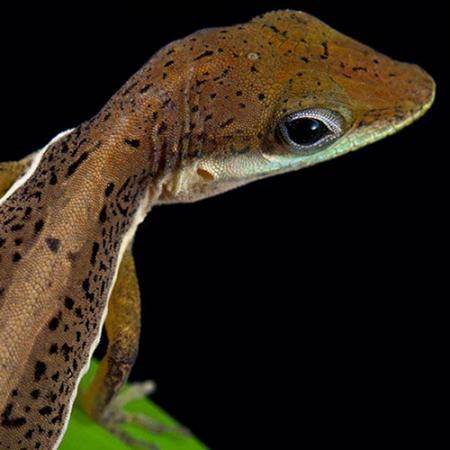Collection Overview
The Burke Museum’s Arachnology and Entomology Collections hold over 392,000 invertebrate specimens (not limited to spiders and butterflies), featuring a world-class arachnology collection plus regionally important collections of Lepidoptera, Myriapoda, Isopoda, cave invertebrates, Oligochaeta and the first arthropod colonists of Mt. St. Helens following the 1980 eruption. All are available for study.
Araneida
Lepidoptera
Other Arachnids
Mt. St. Helens Arthropods
Cave Invertebrates
Myriapods
Isopoda
Oligochaetes
Water Mites
Siphonaptera
Rotifera
Protura
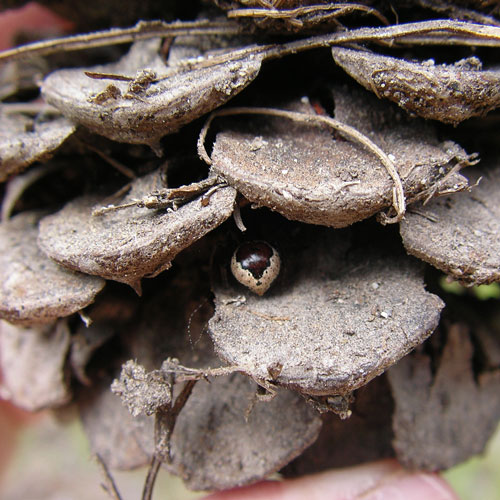
Our Research
The "Spiders of Washington" project is our main, and longest-term, research effort. Burke Arachnology personnel regularly do field collecting all over Washington to enhance our knowledge of the spider species in the state, their geographic distribution, life cycles and environmental requirements.
Starting with a list of less than 300 species in 1971, we are up to 945 species and counting! Trying for equal geographic representation across Washington, we divide the state into 2195 0.1-degree areas and are trying to sample all of them; as of July 2019, 655 done, 1540 to go.
Other research in progress includes studies of a number of non-native spider species recently found in Washington and how their ranges are expanding, often at the expense of native species. A recently submitted paper describes two new cave millipede species from Oregon.

Spider Myths
Nearly all of the widespread assumptions and “general knowledge” about spiders are false!
In Spider Myths, expert Rod Crawford tackles the most common myths he hears in an attempt to set the record straight about spiders.
Questions & Answers
We’ve pulled together some common questions and answers related to the Burke Museum Arachnology & Entomology Collections. Do you have question that isn’t answered in the list below? Contact us.
Can I visit the collection?
Visits to the Arachnology and Entomology Collections may be arranged for qualified researchers, artists and scientific illustrators, and other members of the general public. For more information, contact us.
Can I borrow a specimen for my research?
Specimens from the Arachnology and Entomology Collections are available on short-term loan for scholarly research on request to researchers with institutional affiliation. Loans to unaffiliated individuals are only made in exceptional circumstances, and loans are not made to artists or photographers.
For more information, contact us to explain your project, affiliation and what you would like to borrow.
Can you help identify something?
We will attempt to identify single arachnid or insect specimens from the Pacific Northwest on request. Please note the following:
- Be sure to state where on the planet your specimen was found! No ID is ever possible without geographic location, and our staff has little familiarity with fauna not from the Pacific Northwest.
- Actual specimens are preferred. Photos can't always be identified; small, low resolution photos or verbal descriptions, rarely.
- Any spider that bit someone must be examined directly, even if smashed. Don't throw it away!
- We consider identifying single specimens a public service, but if you have large numbers of specimens, there may be a charge.
For questions about a specimen or to arrange identification of a spider or insect, contact us.
Can I donate a specimen to the collection?
Specimens or collections of Arachnida, Myriapoda, Isopoda, or Lepidoptera can be donated, provided they meet staff research needs and have complete data. No material will be accepted that lacks detailed information on the geographic location where each specimen was collected. Other data such as collection date, habitat, and collector's name is very desirable.
Contact us if you are interested in donating anything with details of what is involved, as many other factors determine whether we can accept a given donation.
Can I become a volunteer?
We couldn’t do what we do without volunteers! Visit our Volunteer page for more information about Burke Museum volunteer opportunities and to view current openings.
Our Team & Contact
Meet the people within the Burke Museum Arachnology & Entomology team.
Have a general question?
Additional Resources
We've compiled several online resources from outside of the Burke Museum that may also be of interest.
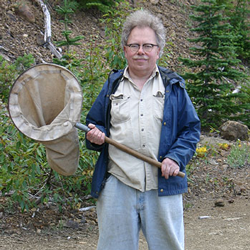
Support Arachnology & Entomology
Your gift makes it possible! We couldn't do what we do without generous donor support for collections care, research and public outreach.
